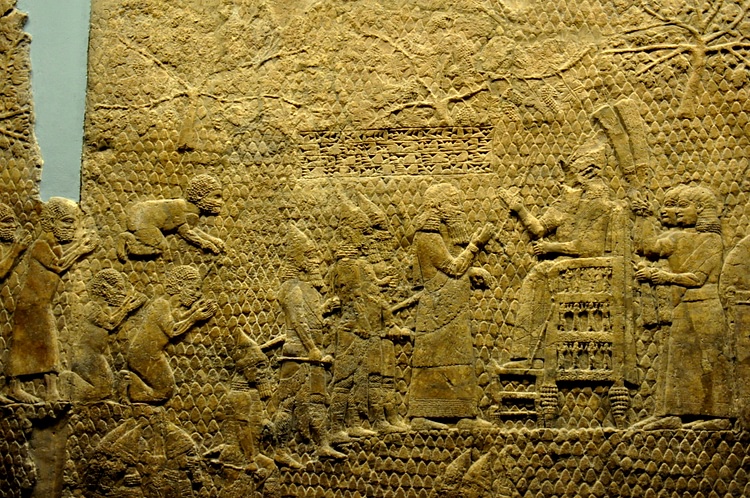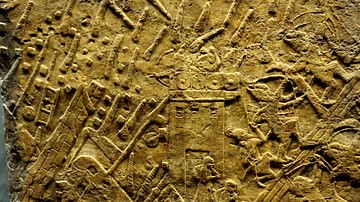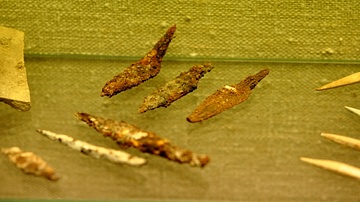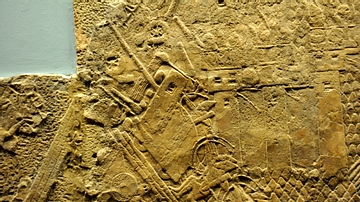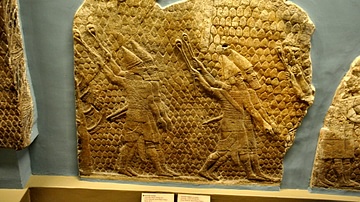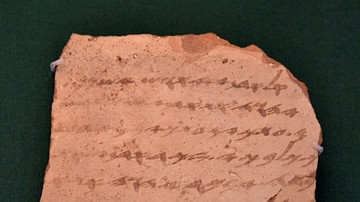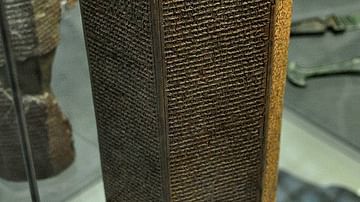Illustration
This wall relief depicts the Assyrian king Sennacherib after the fall of Lachish (Lakhisha), the second largest city in Judah Kingdom. The king sits on a marvelous throne and watches prisoners. He also greets an Assyrian official who appears to be in very close proximity to him, almost touching the king. This man most likely represents the commander-in-chief of the Assyrian army.
The cuneiform inscriptions read "Sennacherib, the mighty king, king of the country of Assyria, sitting on the throne of judgment, before the city of Lakhisha. I give permission for it's slaughter."
Sennacherib's face appears to be deliberately damaged, most probably by an enemy soldier after the fall of Nineveh in 612 BCE.
From the South-West palace at Nineveh (modern Kuyunjik, Mousil city, Iraq), room XXXVI, panels 11-13. Mesopotamia, Neo-Assyrian era, 700-692 BCE. (The British Museum, London).
About the Author
Cite This Work
APA Style
Amin, O. S. M. (2014, July 19). Sennacherib and the Fall of Lachish. World History Encyclopedia. Retrieved from https://www.worldhistory.org/image/2801/sennacherib-and-the-fall-of-lachish/
Chicago Style
Amin, Osama Shukir Muhammed. "Sennacherib and the Fall of Lachish." World History Encyclopedia. Last modified July 19, 2014. https://www.worldhistory.org/image/2801/sennacherib-and-the-fall-of-lachish/.
MLA Style
Amin, Osama Shukir Muhammed. "Sennacherib and the Fall of Lachish." World History Encyclopedia. World History Encyclopedia, 19 Jul 2014, https://www.worldhistory.org/image/2801/sennacherib-and-the-fall-of-lachish/. Web. 02 Jul 2025.

